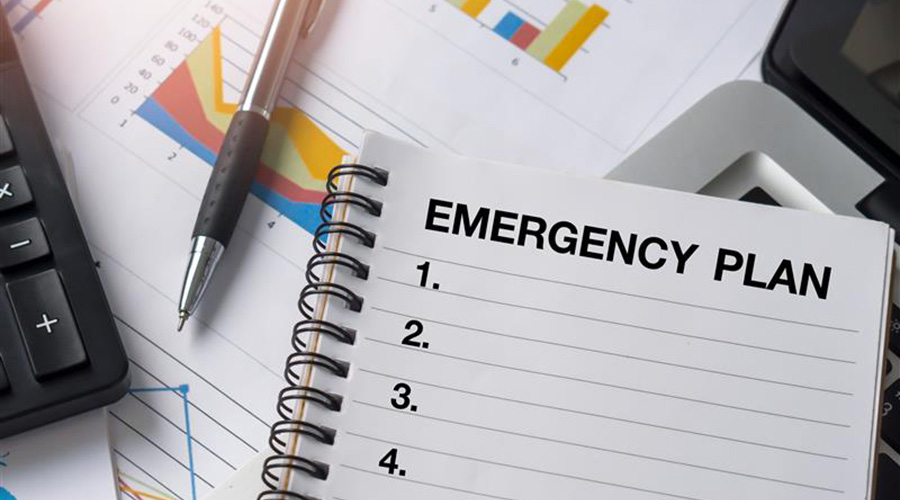AEDs
Life-saving technology, by itself, won't save lives
True story: A high school student suffers cardiac arrest and collapses. The school was given an AED — automated external defibrillator — but no one on site at the time knew or remembered that the device was nearby. Even if they did, it wouldn’t have helped. The AED was locked in a cabinet. Making matters worse, no rescuers were trained at the school to recognize the signs of sudden cardiac arrest. The people on the scene thought the student was suffering a seizure and that is what they told emergency responders rushing to the school. When they arrived, they did not bring an AED. The victim, a star athlete, died.
True story: A student at school fell to the ground with an apparent sudden cardiac arrest. The school had a team of in-house rescuers trained in the use of an AED. The unit was retrieved in a couple of minutes, while there was still time to steady the victim’s erratic heart beat. Because the in-house rescuers’ training wasn’t repeated when the school received new devices, however, the rescuers were confused by the new device and couldn’t find the paddles that apply the electric shock. They were located under a flap. Emergency responders arrived on the scene too late to save the victim.
Sudden cardiac arrest claims 340,000 American lives a year. Having AEDs in facilities is helping to reduce that number. A study in the New England Journal of Medicine showed that twice as many victims survived sudden cardiac arrest when cardiopulmonary resuscitation (CPR) and an AED were used as when only CPR was performed. Simply having an AED, however, without a proper program in place can be almost like having no AED at all.
The anxiety of the moment, changes in technology, lack of knowledge about what to do — and when — can reduce the potential benefit of these devices. Experts say that proper training is as important as a good working AED.
“AEDs are user-friendly and low-maintenance devices that can really make a difference,” says Mary Fran Hazinski, a senior science editor for American Heart Association and clinical nurse specialist at Vanderbilt University. “However, the devices themselves are not effective unless there is a planned and practiced program in place.”
The Elements of a Program
The importance of an AED and CPR is supported by the facts. Patients who receive CPR and a defibrillator shock within three minutes of going into cardiac arrest survive 74 percent of the time. Just two minutes longer and the survival odds drop to 40 percent. Nationally, those who go into sudden cardiac arrest only have a 5 percent survival rate.
However, improving the chances that both CPR and defribillation are performed effectively and when necessary is dependent upon developing and implementing a good AED program. One critical element of the program is the site plan.
The First Step
Having a site or program manager to oversee the site assessment process is the first step in the site plan. The site manager works in conjunction with a medical professional or manufacturer to ensure that devices are properly placed and maintained and to see that the right number of rescuers receive proper training.
The site manager is responsible for shepherding the process through the training and ensuring that there’s proper retraining and drills. In multi-tenant buildings, the site manager coordinates efforts with each tenant, says Patty Silvestri, manager/project implementation specialist for commercial marketing with Medtronic.
“The site coordinator works with each tenant to integrate any programs, particularly any emergency response programs, that may exist,” she says. In some cases, this review has helped owners discover deficiencies in their program, Silvestri says.
In schools or owner-occupied buildings, the site manager works with designated teams for each area of the facility to make sure there are sufficient numbers of rescuers on site at all times and to ensure proper refresher training and drills take place.
But it isn’t always easy to decide who should be responsible for seeing that the plan gets done. In some facilities, such as high rises and multi-tenant campuses, there is confusion concerning responsibilities between owners, property managers and tenants. This is further complicated because some large tenants in a building may already have a program in place. Anja Krammer, director of commercial marketing with Medtronic says it may make sense to have the facility’s property manager or owner organize and manage the program.
Of the Fortune 1,000 companies, 30 percent may have programs, Krammer says. “But that leaves 70 percent that may not have programs. In a large facility, there could be one large tenant with a program and many smaller tenants without.” This could be a liability issue for the owner or property management firm that doesn’t take the initiative to institute an effective program, she says.
So the best way to handle to develop an effective AED program in high-rise or campus facilities is to have the property manager coordinate the AED program with tenants so that there is some uniformity and so that all tenants’ issues are addressed.
The site assessment also must consider a number of characteristics of the facility — including the floorplate, population and any potential obstacles accessing and retrieving an AED — to determine the number of AED devices and their location. The placement and number of AEDs are particularly important for a multistory building or multibuilding campus where travel time could be affected by distance, stairs, elevators and possibly several layers of security.
The AEDs also need to be conveniently placed on walls or on desks so that rescuers can get to them, retrieve them and return to a victim in three minutes at only a brisk walking pace.
“Time is critical,” says Cam Pollock, senior product marketing manager for Philips Medical Systems. “Rescuers have three to five minutes to save a person’s life.”
Defining the number of devices and establishing the risk potential, which is part of the site assessment, requires an assessment of the population. Schools and some corporations with a fairly homogenous younger population have a relatively low risk; for facilities with a population that ranges in age, such as a shopping mall, the risk would be higher.
Training Program
Who should be trained and how they get trained is the next big issue in an AED program. One of the first things to consider is the scope of the training program, including how many people should be trained and the level of training they should receive.
“Using the AED in an emergency situation is the easiest part,” Pollack says. “More important than the device itself is making sure that the right people are trained to respond to a situation; that people know to call emergency responders right away and what to tell them; and that the rescuers know CPR and can effectively apply it. Then, of course, they need to know how to use the AED.”
Many states require that organizations work with medical professionals to develop AED programs. In 29 states, medical prescriptions for the AEDs are required before the units can be purchased.
A recent ruling by the U.S. Food and Drug Administration, however, opens the door for that rule to change. The FDA decided to allow individuals to purchase residential AED units for personal use at home. It’s conceivable, according to a number of manufacturers, that this could lead to dropping the prescription requirement altogether. The FDA decision came with the blessing of the AHA, one of the strongest proponents of having medical expertise integrated with an AED and CPR program.
“While we strongly encourage that owners and managers work with medical professionals on the training program,” Hazinski says, “the AHA could not find any evidence that a simple requirement for prescriptions assured that proper training took place.”
Nonetheless, Hazinski emphasized the importance of medical oversight in setting up the program regardless of whether regulations change. “The program manager should work closely with a health care provider, such as a member of an EMS team, a doctor or a nurse to help direct the program.”
One thing professional trainers and medical personnel can help with is determining how many people need to be trained. The proper number depends on the site assessment and the number of AEDs required. Manufacturers as well as organizations such as the AHA and the Red Cross can help determine the number of AEDs.
A rule of thumb is to have a minimum of four people to as many as 10 or more people trained per AED. “Train a large cadre of individuals,” says Hank Constantine, marketing director for public access defibrillation with Zoll. His own company has 10 people trained for every AED. “That way you can minimize the chance of a deer-in-the-headlights reaction when an emergency occurs.”
The important thing is to make sure the people trained are likely to be at the facility most of the time, Constantine says. “What some schools are doing is training janitors, maintenance staff and security people because they tend to be in the schools most of the time.”
Staying Fresh
Each group to be trained is supplied a mannequin; the AHA recommends no more than four to six people per mannequin. Training lasts four to six hours, depending on whether first aid is taught along with CPR and AED training. The AHA, Red Cross, Medic First Aid and National Safety Council are among third-party organizations that offer training. Some manufacturers use these groups while others offer their own training. Hazinski says there have not been reports of anyone offering substandard training, especially if the organization is working with a medical professional. Trainers are not required to be certified, although the AHA does offer courses for trainers.
It is important to keep the training fresh, not only because the technology may change but also because people can falter under the pressure of an emergency if what they have to do isn’t fully ingrained, Hazinski says.
“Rescuers, even well-trained ones, can get flustered,” she says. “That’s why it is important to not only train individuals but to have regular drills to practice what was learned. Schools and some offices have fire drills because people forget what to do. This is no different.”
It is also important that any AED program be linked closely with the local fire department or EMS provider. Hazinski says they should know who the program manager is and what brand of AEDs is used. They should also be called immediately when someone is suspected of having had sudden cardiac arrest. “Should there be a problem, then EMS or fire department dispatchers can talk a rescuer through the procedure,” she says.
The time it takes EMS personnel to reach a sudden cardiac arrest victim has ramifications for the nature of the training for in-house rescue teams.
If emergency medical personnel are going to be delayed, then more responsibilities are put on in-house team, Hazinski says. “Do EMS personnel have to be cleared through a security gate? Will they have access to elevators? Training for the in-house rescue team must account for possible delays, making sure that they can react properly.”
The Cost of Saving a Life
The costs of maintaining the programs and the AEDs are not significant.
“Once a quarter or once a month the units should be checked,” Constantine says. Batteries typically last two to five years, but their charge should always be monitored. And the pads that actually provide the shock have a water-based gel pad on them that does dry out over time. They are supposed to last two to five years, he says, but should be periodically checked. All units sold have warning buzzers that will indicate that something is wrong with the unit, he says.
The cost of AEDs varies from $1,600 to $1,900 each. The prices have come down significantly in the last couple of years. In addition to the devices, the total cost of pads, batteries and cables that may need replacing is less than $500. Some devices also use battery chargers, which may need replacing and cost around $200.
Training costs are around $65 per four- to six-person team. There may be additional costs for some materials. When totaled the costs are minor, says Silvestri. That’s why she says programs could really be paid for by tenants by adding it to the lease agreement. “It amounts to pennies — to a rounding error — in a lease,” she says. “Some owners and property management firms have been using an AED program as a value-added.”
Good communication about the program is essential. Simply having the device is not sufficient to supply a level of confidence that when it is needed it will be used correctly.
“The biggest mistake is thinking that hanging an AED on the wall offers protection,” Hazinski says. “An organization needs to have trained people that can react quickly and effectively when the need is there.”
Related Topics:











